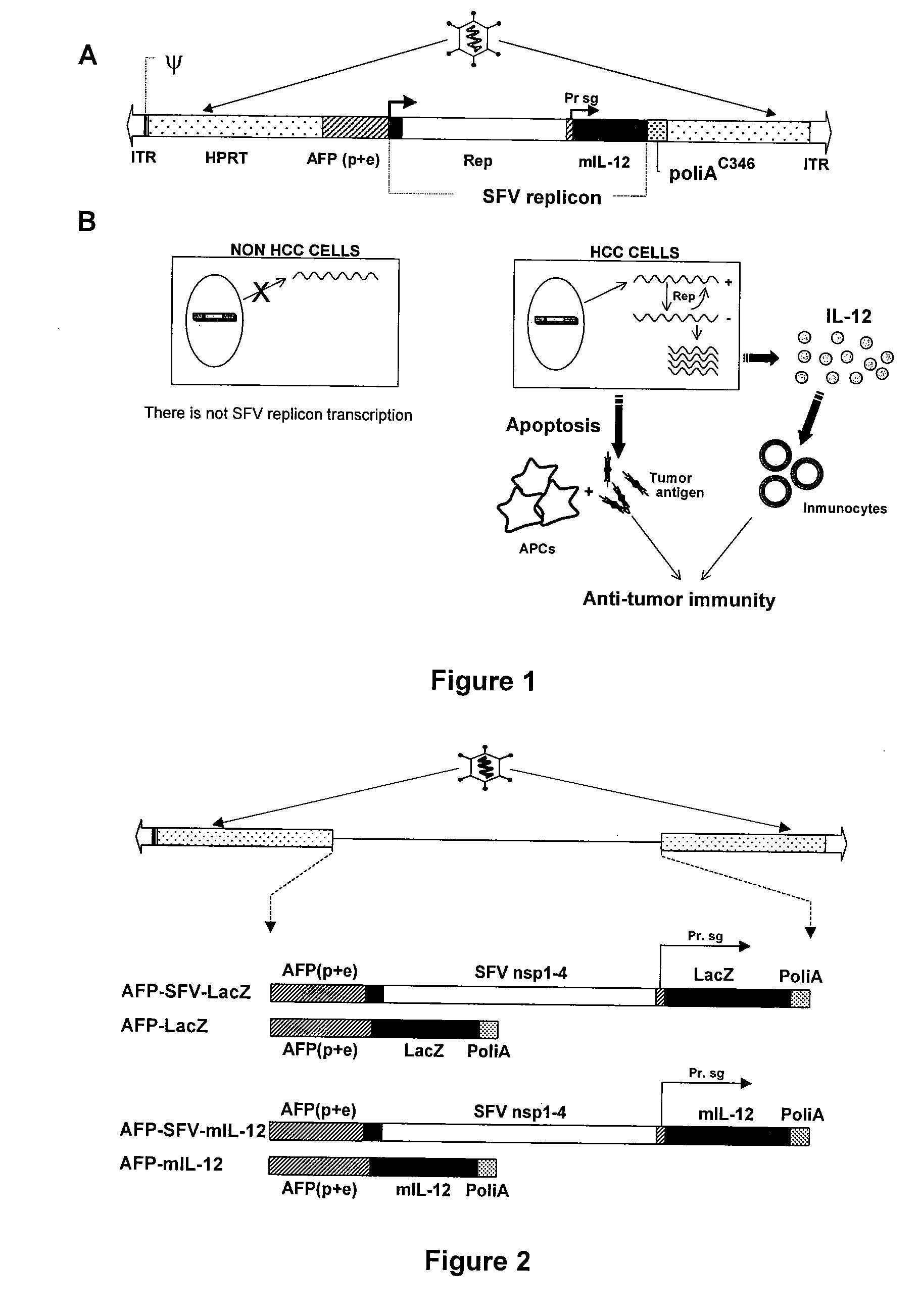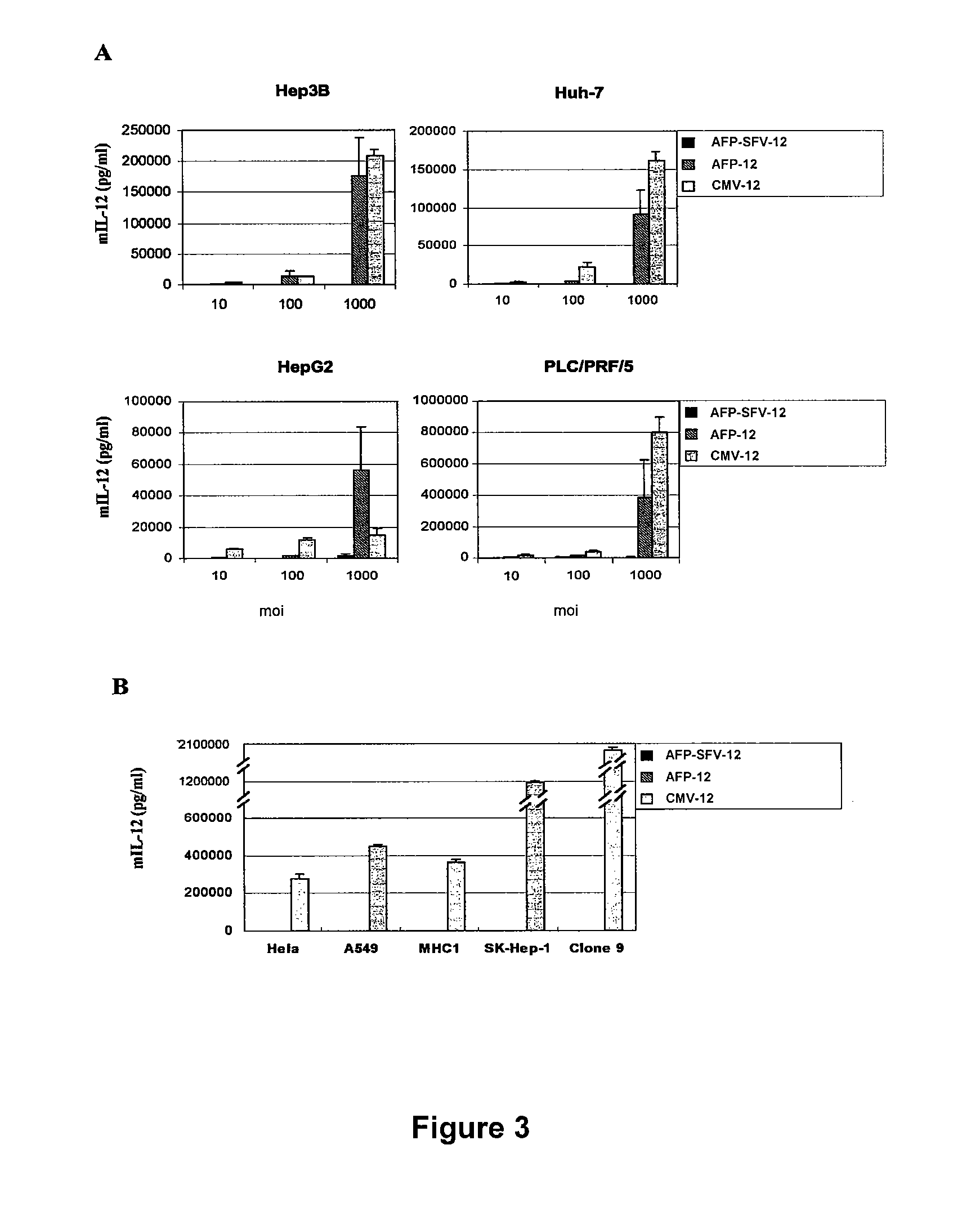Adenovirus/Alphavirus Hybrid Vector for the Effective Administration and Expression of Therapeutic Genes in Tumour Cells
a technology of adenovirus and alphavirus, applied in the field of genic expression vectors, can solve the problems of limited application of therapeutic dose, serious side effects, lack of tumor specificity,
- Summary
- Abstract
- Description
- Claims
- Application Information
AI Technical Summary
Benefits of technology
Problems solved by technology
Method used
Image
Examples
Embodiment Construction
[0015] The present invention firstly relates to a genic expression adenoviral hybrid vector characterized in that it comprises at least the following elements, oriented in the direction 5′ to 3′: [0016] i. a first chain of adenoviral origin comprising a first inverted terminal repeat (ITR) sequence and a signal sequence for packaging of the adenovirus; [0017] ii. a first non-encoding stuffer sequence; [0018] iii. a sequence corresponding to a tissue specific promoter; [0019] iv. a chain of cDNA derived from an alphavirus, the sequence of which is partly complementary to an alphaviral RNA, comprising at least a sequence encoding for at least one exogenous gene of interest; [0020] v. a polyadenylation sequence; and [0021] vi. a second adenoviral inverted terminal repeat (ITR) sequence.
[0022] More specifically, the present invention relates to the construction of an adenoviral hybrid vector comprising as element iv a chain of cDNA derived from an alphavirus corresponding to the sequen...
PUM
| Property | Measurement | Unit |
|---|---|---|
| Length | aaaaa | aaaaa |
| Therapeutic | aaaaa | aaaaa |
| Immunogenicity | aaaaa | aaaaa |
Abstract
Description
Claims
Application Information
 Login to View More
Login to View More - R&D
- Intellectual Property
- Life Sciences
- Materials
- Tech Scout
- Unparalleled Data Quality
- Higher Quality Content
- 60% Fewer Hallucinations
Browse by: Latest US Patents, China's latest patents, Technical Efficacy Thesaurus, Application Domain, Technology Topic, Popular Technical Reports.
© 2025 PatSnap. All rights reserved.Legal|Privacy policy|Modern Slavery Act Transparency Statement|Sitemap|About US| Contact US: help@patsnap.com



